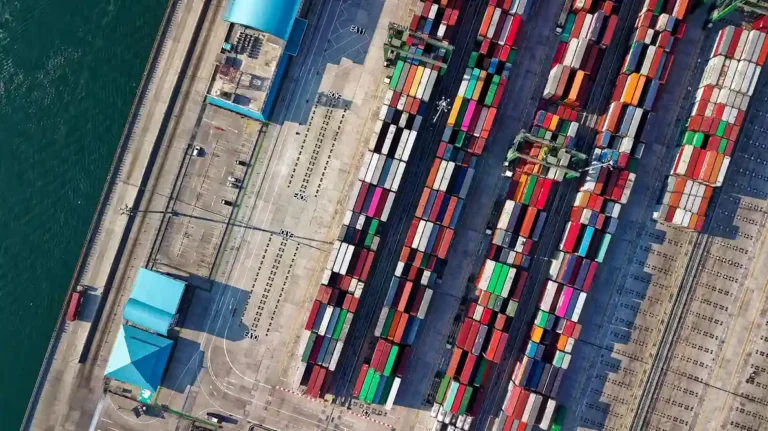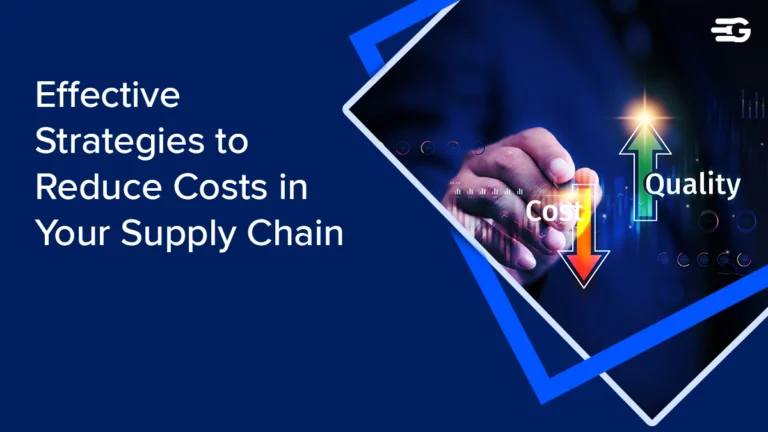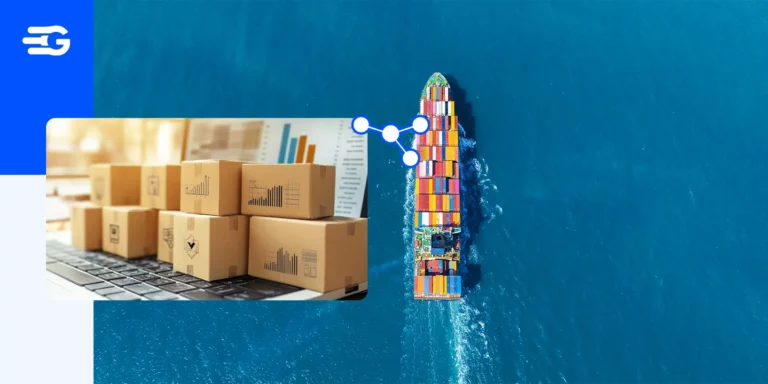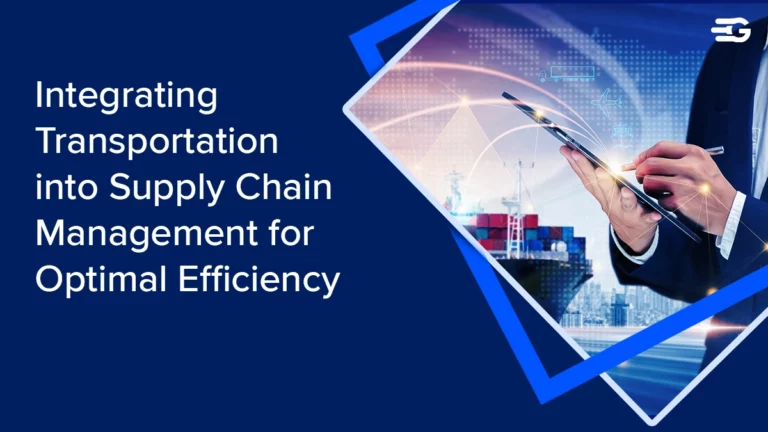Supply Chain Transformation Explained: Benefits & How to Start
Everyone’s talking about supply chain transformation these days, but what does it actually mean for your business? Simply put, it’s taking a hard look at how you currently move products and finding better ways to do it.
Maybe your inventory system is outdated, or you’re still tracking shipments with spreadsheets, or your warehouse layout hasn’t changed since 2010. Supply chain transformation means fixing those pain points with smarter technology and processes. Let’s break down what this actually looks like in practice and how you can start making changes that matter.
What Is Supply Chain Transformation?
Supply chain transformation is the complete overhaul of how your business moves products from suppliers to customers. It’s not just tweaking a few processes or buying new software. It’s rethinking your entire operation from the ground up.
Think of it this way: if regular supply chain improvements are like getting a tune-up for your car, supply chain transformation is like trading in your old vehicle for a completely different model. You’re changing the fundamental way you handle inventory, manage suppliers, fulfill orders, and track shipments.
The core difference lies in scope and impact. Traditional improvements might focus on one problem area, maybe faster warehouse picking or better supplier communication. But supply chain transformation touches every part of your operation simultaneously.
Why Your Business Needs Supply Chain Transformation
The business world has changed dramatically, and your supply chain needs to keep up. Customer expectations are higher than ever, and what worked five years ago simply won’t cut it in today’s market.
Things driving the need for supply chain transformation include:
- Customer demands: Same-day delivery has become table stakes in most industries, not just e-commerce. Customers expect to track their orders in real-time from warehouse to doorstep, and they want accurate delivery windows they can count on. Perfect order accuracy means the right product, in the right quantity, delivered to the right place at the right time – every single time. When orders go wrong, customers don’t just complain, they switch to competitors who can deliver consistently.
- Cost pressures: Fuel costs can swing 20-30% in a matter of months, directly hitting your transportation budget. Labor shortages mean you’re paying premium wages for warehouse workers and drivers, if you can find them at all. Raw material prices fluctuate based on global events completely outside your control. These cost pressures are hitting everyone simultaneously, making it harder to pass increases along to customers who are already price-sensitive.
- Market volatility: A port strike in one country can disrupt your entire production schedule. Geopolitical tensions create overnight supply shortages. Consumer trends can shift demand by 50% in a matter of days. Your supply chain needs to be flexible enough to handle these disruptions without falling apart.
- Data overload: Your team is drowning in information from suppliers, carriers, warehouses, and customers, but most of it sits in separate systems that don’t talk to each other. By the time you manually compile reports to understand what’s happening, the situation has already changed.
Without supply chain transformation, you’re essentially trying to compete in a Formula 1 race with a pickup truck.
Key Areas of Supply Chain Transformation
The most successful transformations focus on three core areas that work together to create a more efficient, responsive supply chain.
- Technology Integration
Modern supply chains run on data, and technology is what makes that data useful. This means replacing manual processes with automated systems that can track inventory in real-time, predict demand patterns, and optimize routes automatically.
Cloud-based platforms give you visibility into every step of your supply chain, from raw materials to final delivery. Integration tools connect your existing systems so information flows seamlessly between departments.
- Process Optimization
Even the best technology won’t help if your underlying processes are broken.
This area focuses on streamlining workflows, eliminating redundant steps, and improving communication between teams. It includes redesigning how you work with suppliers, how orders move through your system, and how you handle returns or exceptions.
The goal is creating standardized processes that everyone can follow consistently.
- Infrastructure Updates
Your physical assets need to support your new digital capabilities. This might mean reconfiguring warehouse layouts for better efficiency, upgrading transportation fleets with tracking technology, or relocating distribution centers closer to customers.
Infrastructure changes often require the biggest upfront investment but deliver long-term operational benefits.
When these three areas work together, supply chain transformation creates an operation that’s more resilient, cost-effective, and customer-focused.
How to Start Your Supply Chain Transformation
Getting started with supply chain transformation can feel overwhelming, but breaking it down into clear steps makes the process manageable. Here’s an example approach you can follow.
Step 1 – Assess Your Current State
Before making any changes, you need to understand exactly where you stand now. Map out your entire supply chain process, from supplier relationships to customer delivery. Identify pain points, bottlenecks, and areas where you’re losing time or money.
Gather data on key metrics like order accuracy, delivery times, and inventory costs. This assessment becomes your baseline for measuring improvement.
Step 2 – Set Clear Goals and Priorities
Not everything needs to be fixed at once. Based on your assessment, identify which problems are costing you the most money or causing the biggest customer complaints.
Set specific, measurable goals for your supply chain transformation, like reducing delivery times by 30% or cutting inventory costs by 20%. Prioritize initiatives that will deliver the biggest impact with available resources.
Step 3 – Choose the Right Technology Partner
Supply chain transformation requires integrated solutions that can handle multiple aspects of your operation.
GoComet helps businesses tackle all three key transformation areas through unified technology solutions (more on this in a minute). For now: basically, our comprehensive systems offer logistics management, supplier collaboration, and real-time visibility in one platform, eliminating the need to juggle multiple disconnected tools.
Step 4 – Start Small and Scale Up
Begin with pilot programs in one area or location before rolling out changes company-wide. This approach lets you test new processes, train staff, and work out any issues before full implementation.
Once you’ve proven success in your pilot, you can confidently expand supply chain transformation initiatives across your entire operation.
How GoComet Accelerates Supply Chain Transformation
Most businesses struggle with supply chain transformation because they try to fix everything separately – implementing new tracking software here, upgrading warehouse systems there, and hoping it all works together.
GoComet takes a different approach by handling all three transformation areas through one unified platform.
| Transformation Area | How GoComet Helps | Key Benefits |
| Technology Integration | Unified dashboard for tracking shipments across all transport modes with AI-powered insights | Eliminate jumping between multiple systems and spreadsheets |
| Process Optimization | Automated freight bidding, invoice processing, and vendor management workflows | Reduce manual tasks that eat up your team’s time |
| Infrastructure Updates | Real-time visibility into port congestion, delays, and route optimization opportunities | Make smarter decisions about shipping routes and timing |
The platform connects your existing systems instead of replacing them, which means you can start seeing results without overhauling your entire operation. Companies using GoComet typically handle more shipments with the same staff while cutting transportation costs through better rate negotiations and automated processes.
Rather than spending months coordinating between different vendors and systems, you get everything needed for supply chain transformation in one place.
Conclusion
Most businesses know their current supply chain setup isn’t perfect, but they keep putting off making real changes. The problem is that small fixes and patches only work for so long. Eventually, you need to address the underlying issues that are costing you time and money every day.
The good news is that supply chain transformation doesn’t have to happen overnight. You can start with one area, prove it works, then expand from there. The hardest part is usually just taking that first step and committing to doing things differently.





